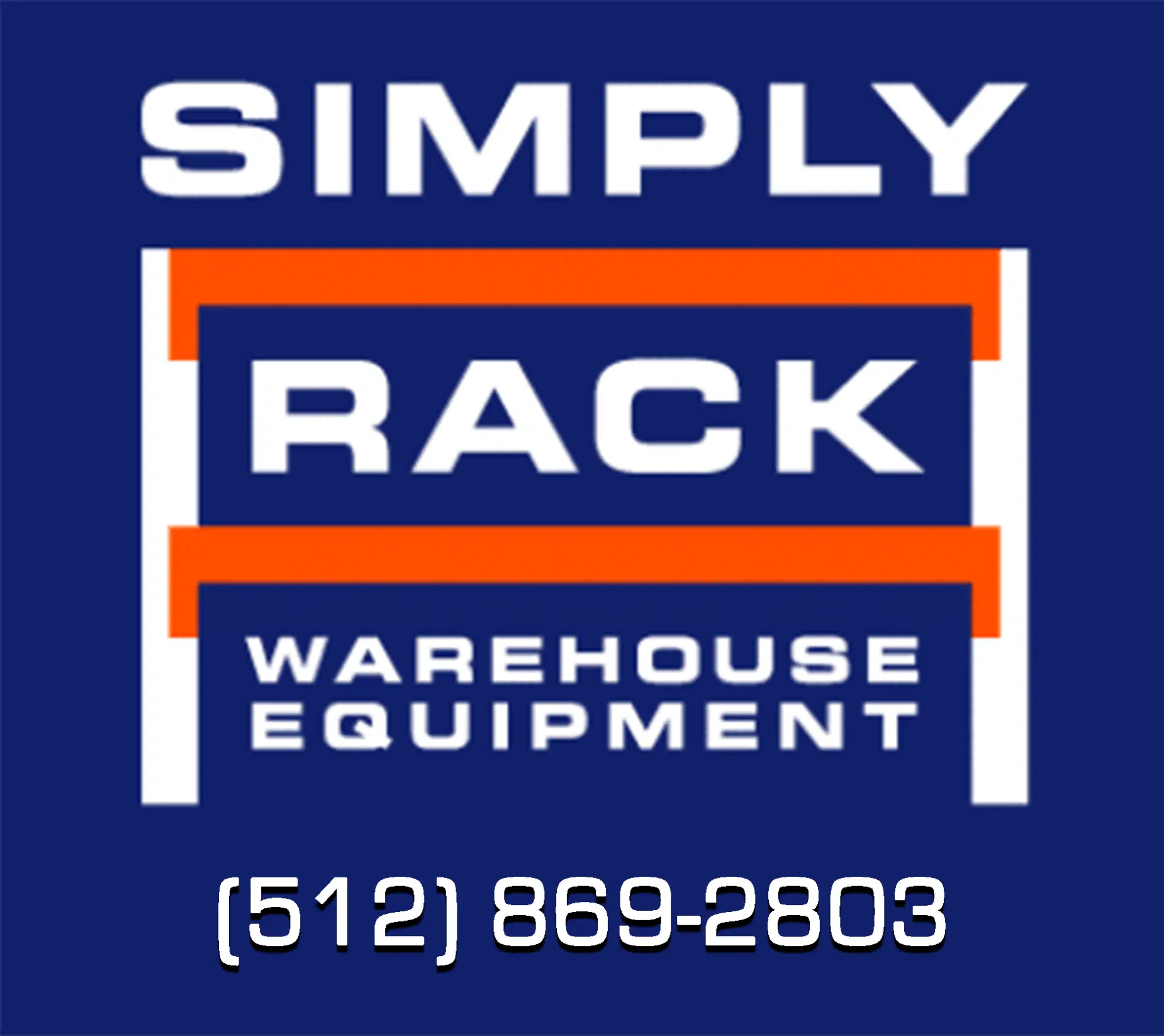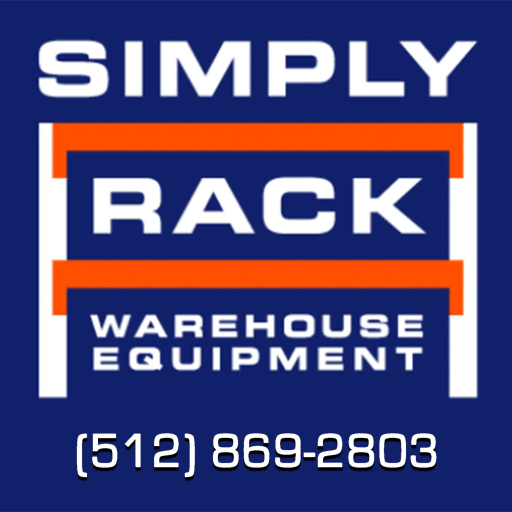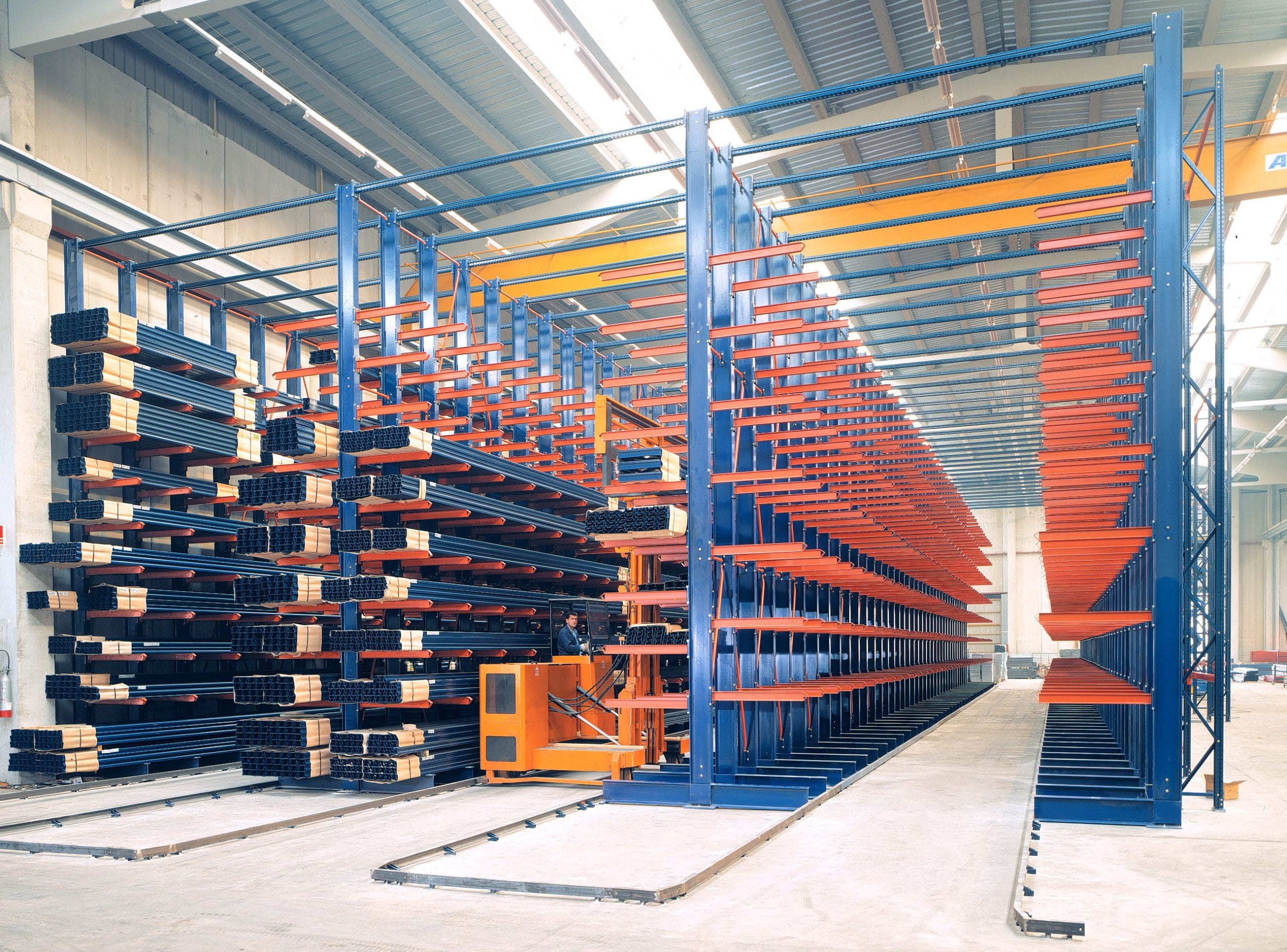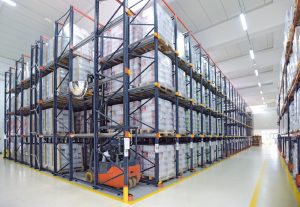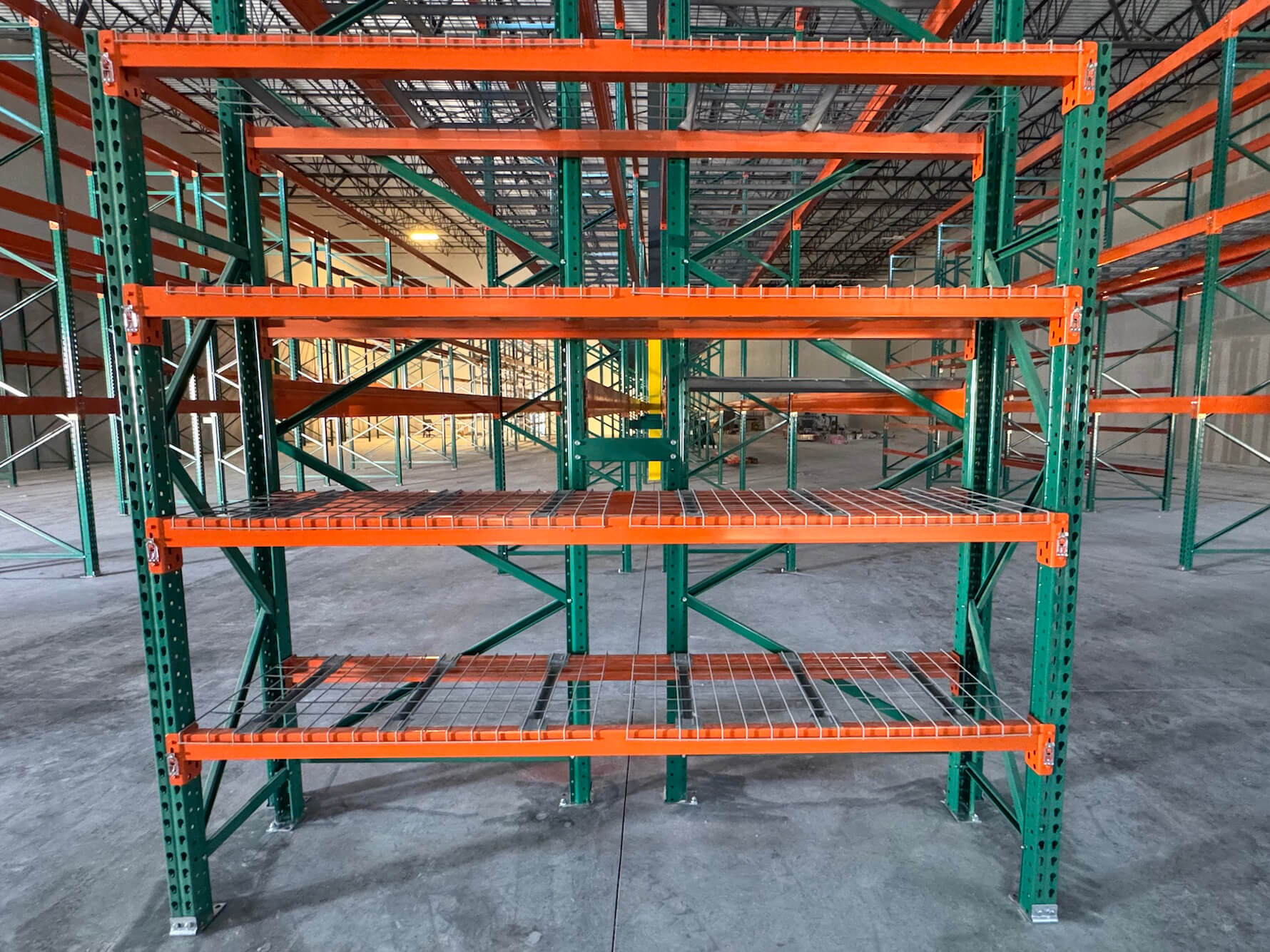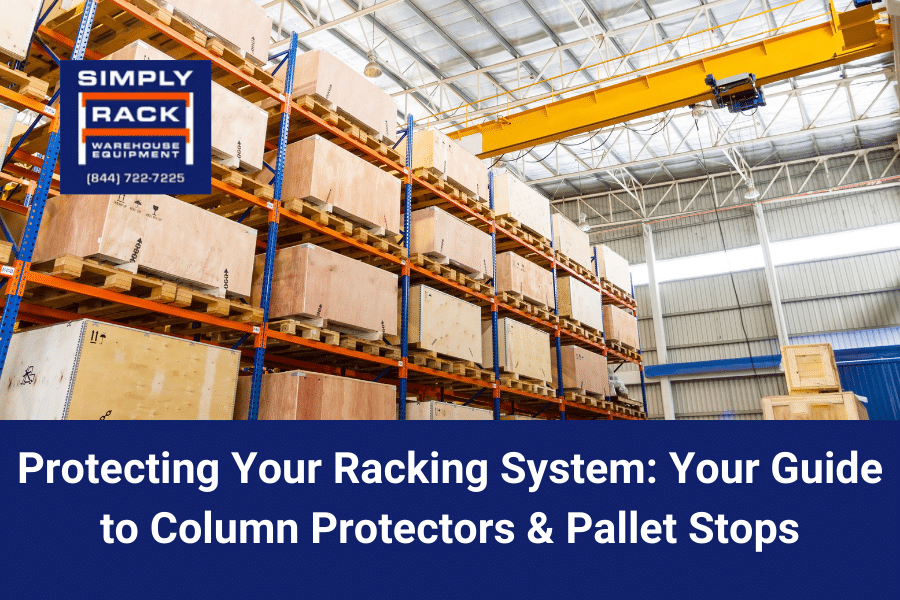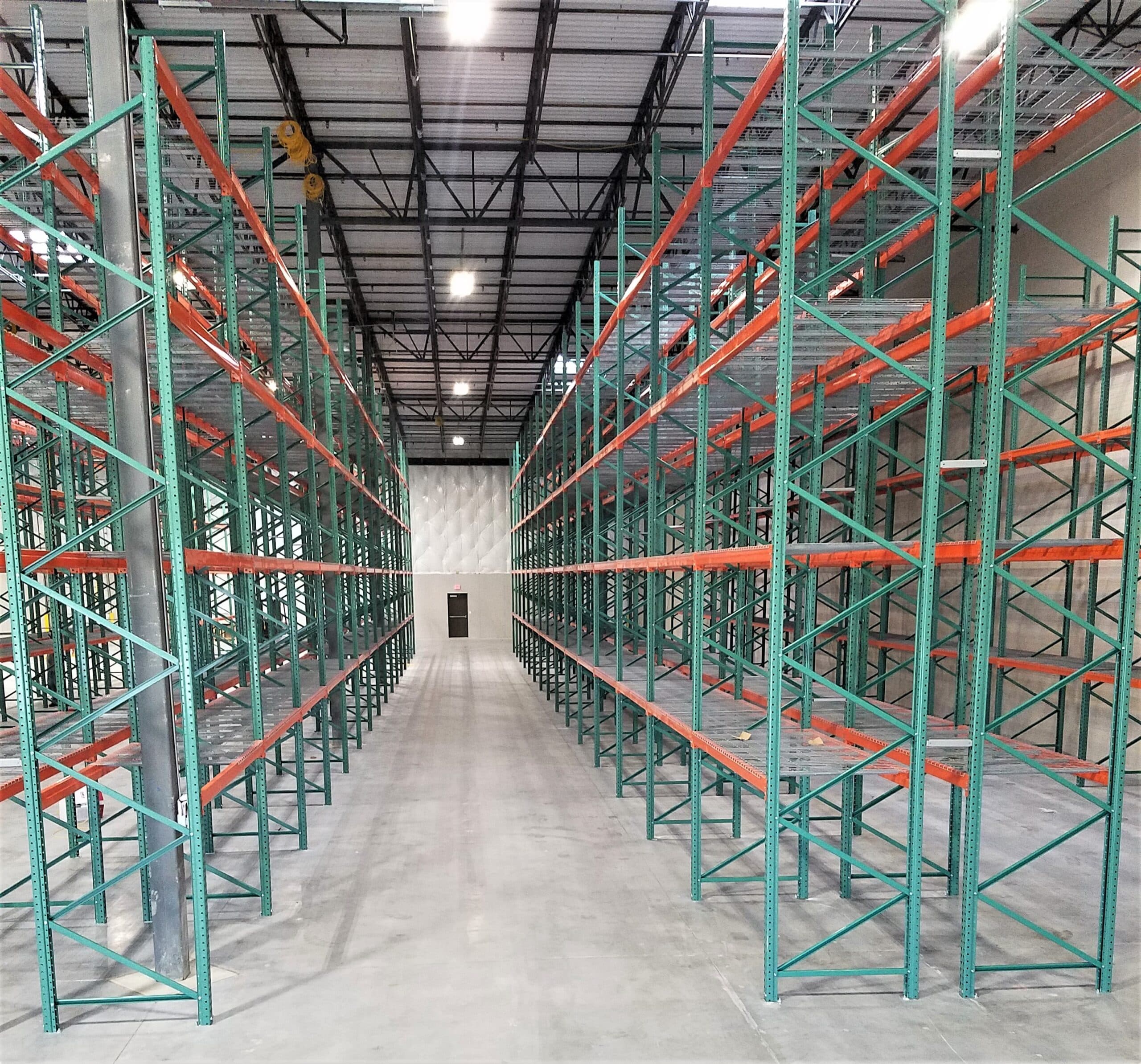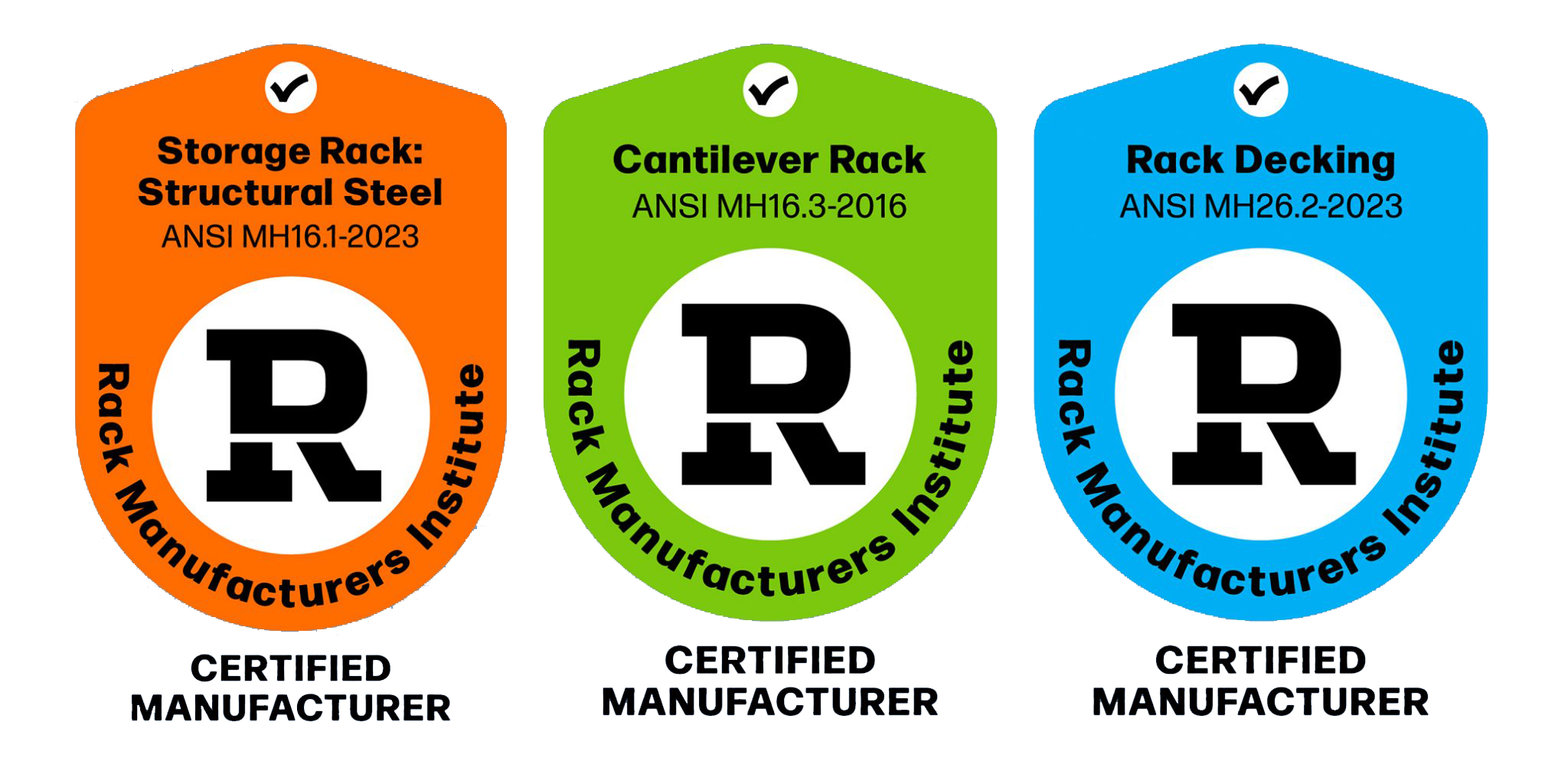Choosing the appropriate pallet racking system is a decision that directly influences the efficiency, accessibility, and organization of your inventory. The diverse array of pallet racking systems available can be overwhelming. Each one benefits the unique needs and inventory characteristics of different businesses. From the space-maximizing capabilities of drive-in racking to the accessibility of selective racking, each design has its own perks. Here at Simply Rack, we help guide you towards making an informed decision for your particular business needs.
Selective Pallet Racking
Selective pallet racking offers a straightforward approach to organizing goods. This system directly accesses each pallet stored in the rack. Vertical upright frames connected by horizontal beams create the structure. These form shelves to easily load and unload using forklifts. This system enables businesses to maximize their storage space while ensuring quick and convenient access to individual pallets. It is an ideal choice for environments where a diverse range of products are frequently loaded and unloaded, offering a seamless flow of goods within the warehouse.
Selective pallet racking is advantageous for businesses dealing with a high variety of products and a relatively low to medium volume of each SKU (Stock Keeping Unit). This system excels in accommodating different product sizes of varying weights and dimensions. Industries such as retail, e-commerce, and manufacturing find selective pallet racking well-suited for their needs. First In, First Out (FIFO) inventory management systems, where the earliest stocked products are the first to be retrieved, often use this system. FIFO is crucial for items with expiration dates or those subject to regular turnover.
Drive-In and Drive-Through Racking
Drive-in and drive-through racking systems are designed to optimize warehouse space while accommodating a large volume of homogeneous products. In these systems, forklifts can directly enter the rack structure to deposit or retrieve pallets. This eliminates the need for aisles between racks. In drive-in systems, pallets are stored on rails running from the front to the back of the rack. Forklifts drive into the structure to deposit or retrieve pallets. Drive-through systems, on the other hand, have openings at both ends of the rack. Forklifts drive through the structure, providing a continuous flow of accessibility.
Drive-in and drive-through racking pair well with industries dealing with large quantities of identical products. This is especially true when the order of storage and retrieval is not critical. Such businesses include cold storage facilities and manufacturing plants with consistent product lines. Businesses dealing with raw materials or finished goods in large batches also utilize the efficiency of these racking systems. They are ideal choices for businesses with high-volume storage requirements.
Push-Back Racking
Push-back racking maximizes both space and accessibility in a warehouse setting. It positions multiple pallets one behind the other on slightly inclined nested carts, making it ideal for high-density storage. The new pallet pushes the existing pallets backward along the rails. This LIFO (Last In, First Out) configuration allows for efficient use of depth space. It balances high storage density with the ability to access multiple SKUs without having to move other pallets.
Push-back racking excels in warehouse environments where storage space is limited and efficient use of cubic space is essential. Businesses often find push-back racking beneficial for high-density storage that require access to a variety of products. It is not an ideal solution for businesses with products that expire quickly, as the LIFO configuration cannot ensure freshness of products.
Pallet Flow Racking
Pallet flow racking, also known as gravity flow racking, is a highly efficient storage solution designed to optimize space. It works well with First In, First Out (FIFO) inventory management systems. This system operates on the principle of gravity, putting pallets on wheel tracks. Pallets loaded onto the higher end of the rack move along the tracks, with the help of gravity, towards the picking end. The oldest product sits in the front position. This product rotation minimizes the risk of product expiration. In short, it functions as the push-back racking for FIFO management instead of LIFO.
This design makes pallet flow racking pair well with inventories that have expiration dates and that utilize the FIFO inventory management system. Industries dealing with perishable goods, such as food and pharmaceuticals, find this feature beneficial. Additionally, pallet flow racking is ideal for high-density storage scenarios where space optimization and efficient space usage are crucial. By combining the advantages of gravity-based flow with systematic inventory rotation, pallet flow racking provides a solution that enhances both product freshness and warehouse operational efficiency.
Cantilever Racking
Cantilever racking is an efficient storage solution for items with unconventional shapes, lengths, and dimensions. Unlike traditional pallet racking systems, cantilever racks lack front columns, allowing for unobstructed horizontal storage space. The design consists of vertical columns with horizontal arms extending outward, creating a cantilevered structure. This configuration enables easy storage and access to items that do not fit efficiently into standard pallet racking systems.
The versatility of cantilever racking makes it an excellent choice for industries dealing with non-standardized inventory, particularly in construction, manufacturing, and retail. It’s the best system for storing long and heavy materials that would be challenging to manage with other storage systems. The horizontal arms have adjustable levels, accommodating items of varying sizes within the same rack. This adaptability makes cantilever racking ideal for businesses with oversized or irregularly shaped products, contributing to streamlined warehouse operations and effective inventory management.
Mezzanine Racking
Mezzanine racking offers a unique and versatile solution for businesses aiming to maximize vertical space in their warehouse or distribution center. This system combines traditional pallet racking with an elevated mezzanine platform, effectively creating a multi-level storage structure. The mezzanine, which is essentially an intermediate floor, provides additional space for storage. It creates a two-tiered or even multi-tiered storage system within the existing warehouse footprint.
One of the key advantages of mezzanine racking is its ability to make efficient use of available vertical space without the need for extensive building expansions. This type of racking system is particularly beneficial for businesses dealing with a mix of large and small items. It allows for the segregation of inventory based on size, weight, or product type. Lower levels can house pallet racking, while the mezzanine level provides space for bulk storage, order picking, or office space. Industries such as e-commerce, retail, and logistics often find mezzanine racking beneficial for its flexibility and adaptability.
Teardrop Pallet Racking
Last but certainly not least, teardrop pallet racking is Simply Rack’s most popular pallet racking system. It is a storage solution known for its universal efficiency and ease of assembly. Characterized by the teardrop-shaped holes on the upright frames, this system allows for quick and straightforward beam installation without the need for additional hardware. The teardrop easily locks beams in place, providing a secure and stable storage structure that our customers rely on. Teardrop pallet racking allows for the adjustment of beam heights to accommodate various pallet sizes, making it an excellent choice for businesses with diverse inventory profiles.
This racking system is particularly suitable for industries with evolving storage needs, as it provides a scalable solution that can be reconfigured as inventory requirements change. Spaces where being able to easily modify storage configurations is essential often use teardrop pallet racking. Its popularity stems from its user-friendly design, durability, and compatibility with a range of pallet types. It is a reliable choice for optimizing storage space and enhancing overall warehouse functionality.
In conclusion, finding the right pallet racking system is a decision that impacts the efficiency and functionality of your warehouse. Each system brings its own set of advantages, so it’s crucial to understand how each one would impact your business. Understand the unique needs of your inventory, considering factors such as product variety, turnover rates, and space constraints, to make an informed decision. What’s the next step? Installing your chosen racking! Pallet racking professionals can help you avoid common installation mistakes. Call Simply Rack at (512) 869-2803 for questions about your racking needs!
